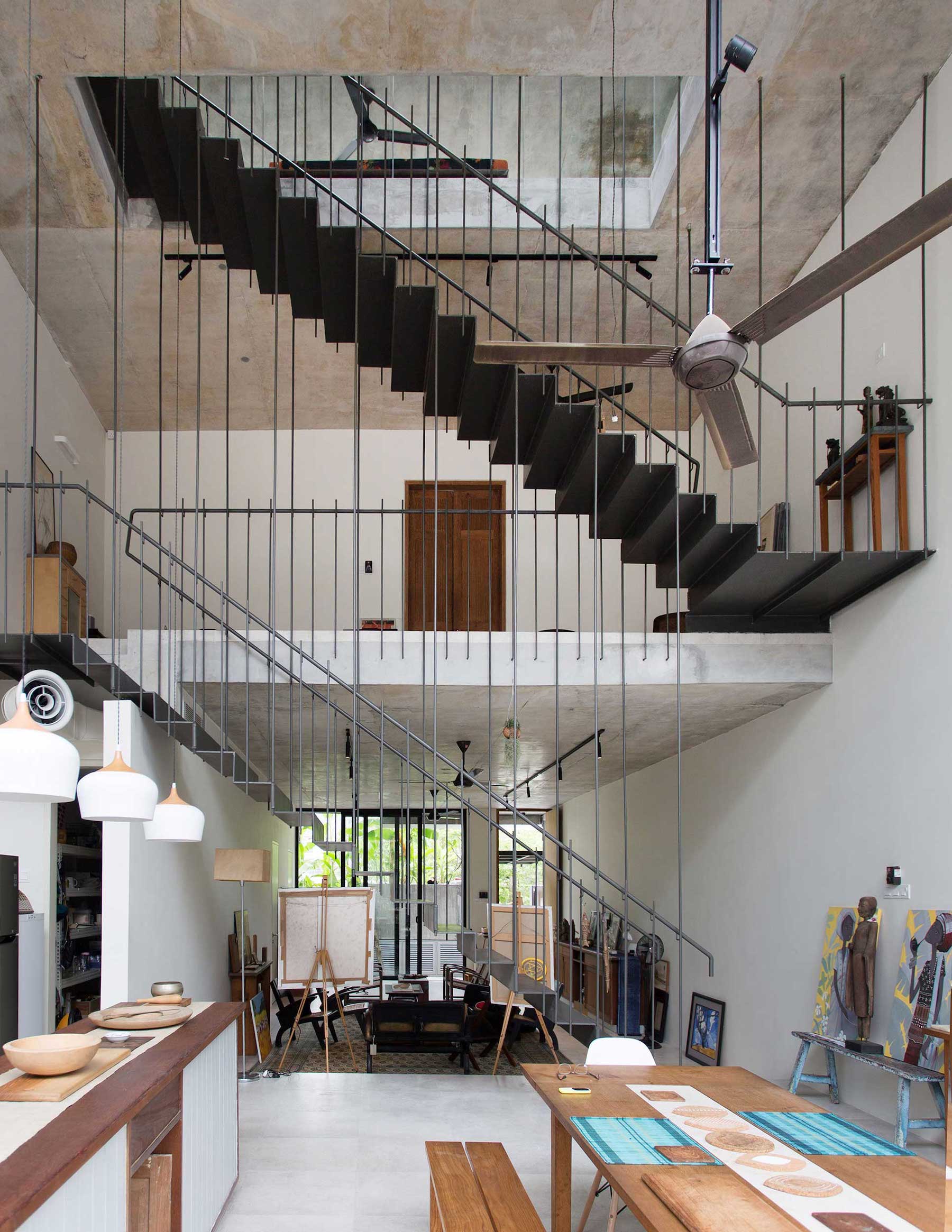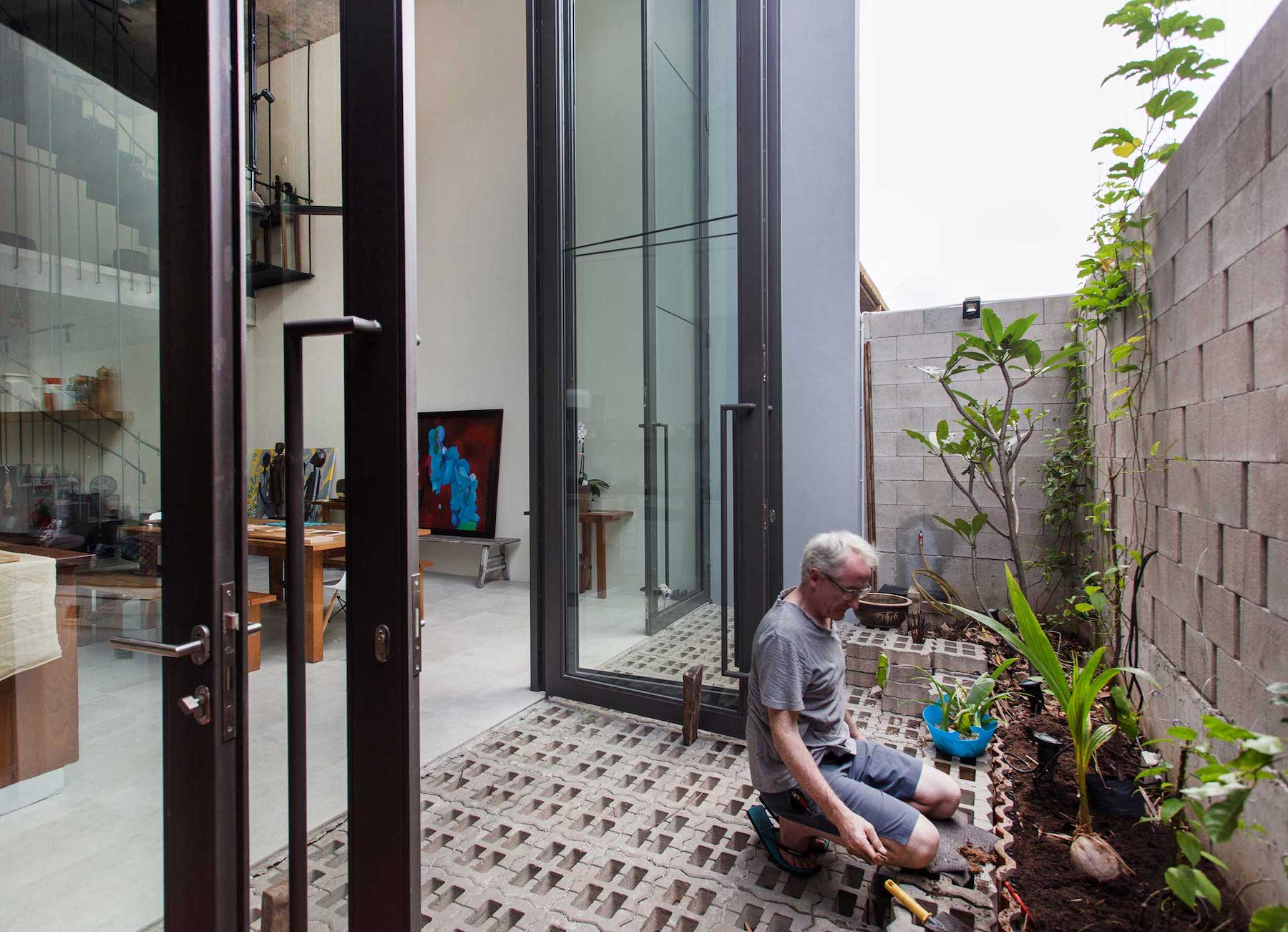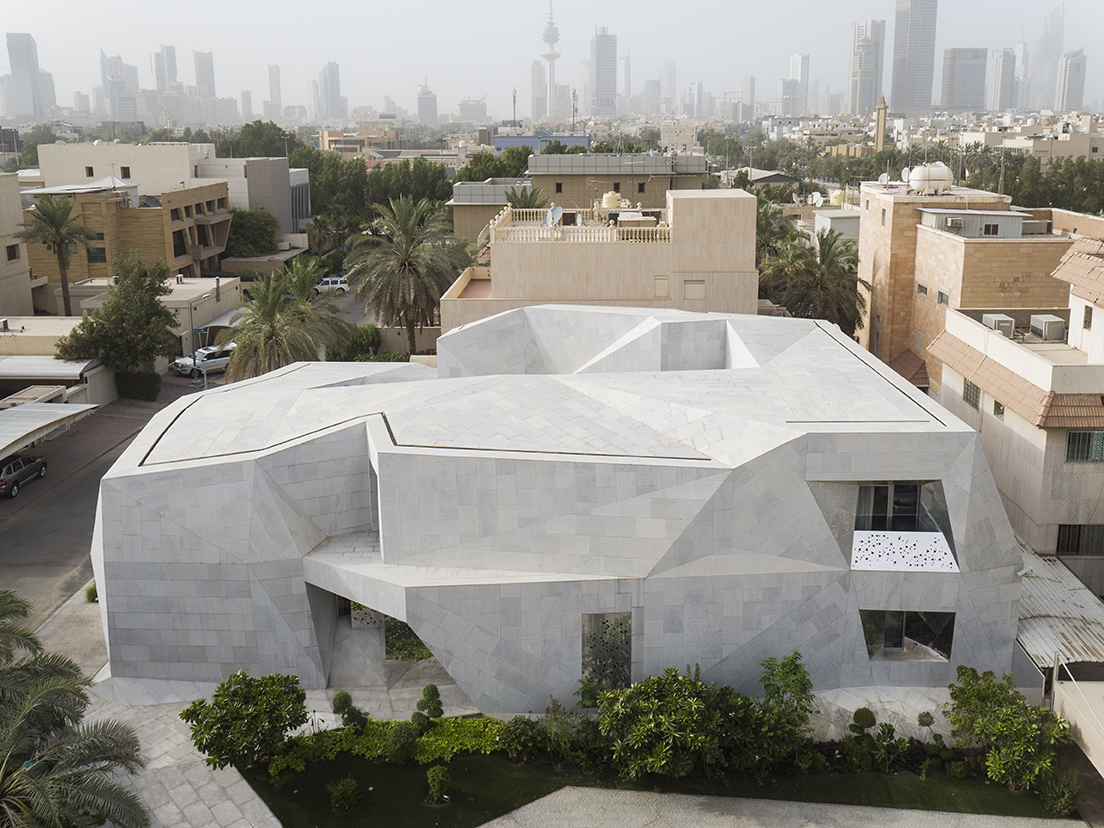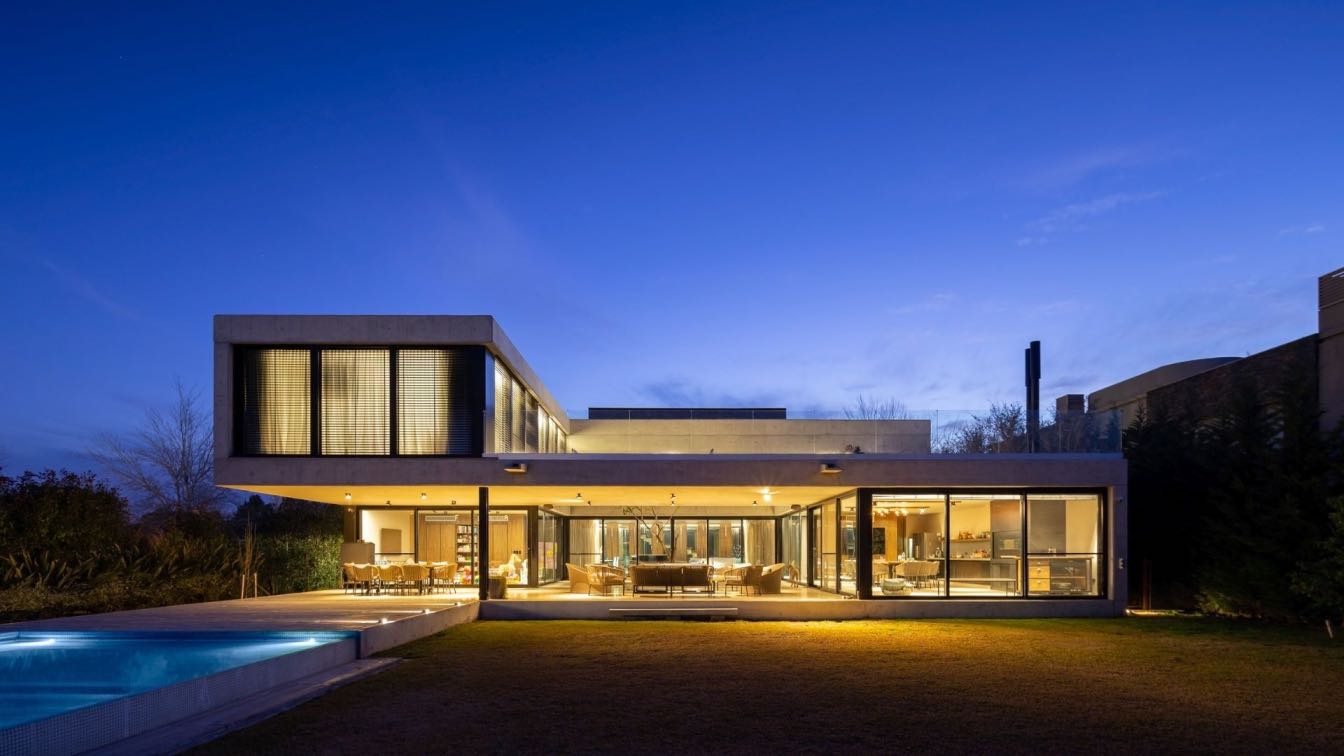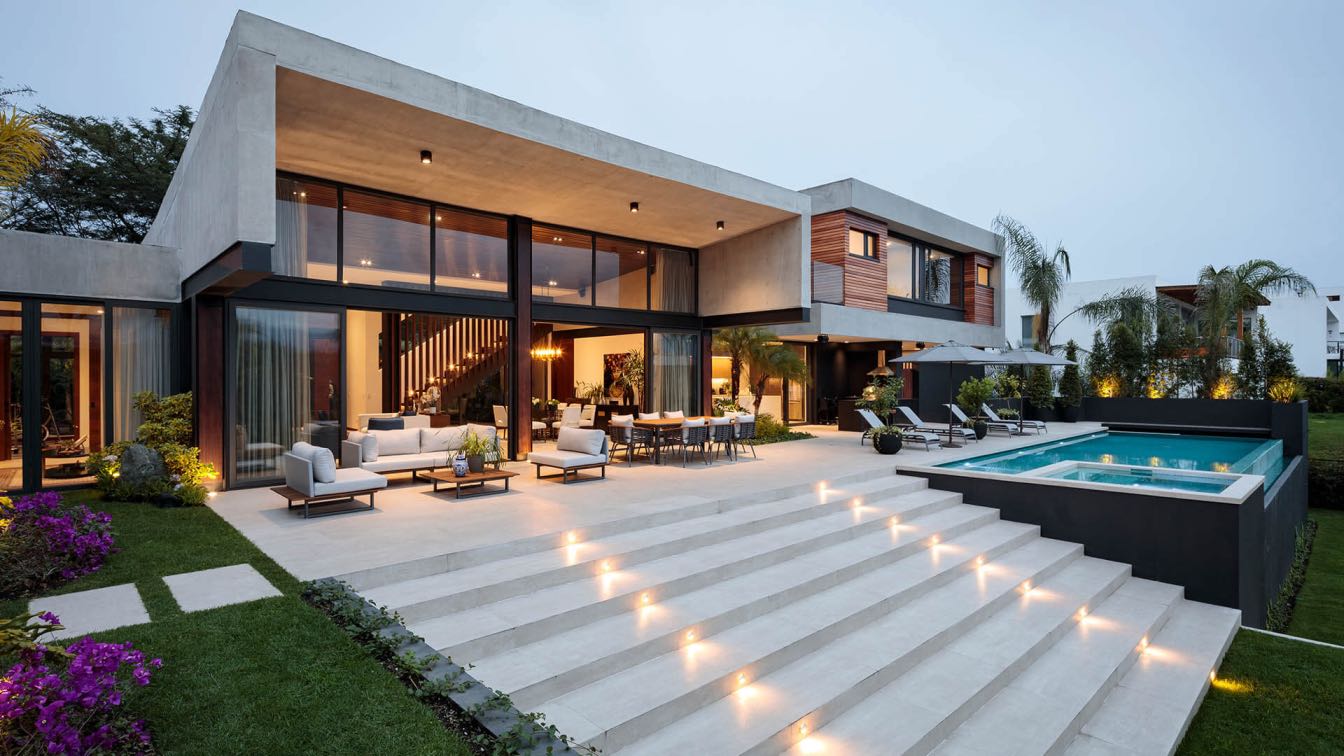The Kuala Lumpur based architectural research studio Formzero has designed "Planter Box House" a single family house in Kuala Lumpur, Malaysia.
Architect's statement: Planter Box House designed by Formzero is aimed to celebrate sustainable living lifestyle and to grow food for self-sufficiency. With multiple passive design strategies to create a low energy house, the house is covered by more than 40 types of edible plants. These plants are grown in concrete planter boxes which serve as both stormwater retention and irrigation reservoir, are also seen as an urban landscape.

Designed as a house for a retired couple who are passionate in growing foods, the plants filled Planter Box House appears less defined, as its appearance oscillates between garden, farm and house, anticipating for a redefinition of contemporary tropical house.
The house with its cascading concrete planter boxes occupied with more than 40 types of edible plants on every floor, creates a strong visual contrast with the surrounding buildings. Its ecessed frontage provides additional public spaces for inter-neighborhood interaction. Beyond the boundary, the first planter box is built around an existing jasmine tree. This planter serves an urban furniture, a connection between the couple and their neighbour.
The internal spaces are imbued with a strong sense of hospitality and the owner’s attitude towards tropical sustainable urban community living and farming. Upon opening the gate, one could experience the light and cross ventilation while also able to read the whole ground floor visually as there are only glass walls and window in between the front and the back. Separated by the living room and the central staircase of the house, the back of the building is celebrated with a double volume kitchen and dining area with full height glass window that could open outwards towards a green wall at the back.

Taking inspiration from the vernacular tropical house, split bamboo produced by the indigenous people called Temuan from Negeri Sembilan is used as formwork for the concrete work of the planter boxes. While this bamboo texture signifies an abstract organic form of the house, it is also a sustainable solution to low maintenance finish that could age well with the rain and urban pollution.
The Planter Box House is a physical representation of the owner’s lifestyle. It is also a knowledge platform in which the married couple constantly improvises the irrigation and planting system. Such custom made irrigation system is interconnected between the planter boxes that stores and recycles nutritious resources and rainwater within the land. It also allows full and precise manipulation of the planter box from the soil composition to the level of water being supplied to each individual planter box.
This project serves as a valuable opportunity and experience not only for the client to learn about farming in tropical setting, but also for the surrounding community. The life of the building is expected to be continually improved, developed and grows organically along with the married couple.
